
Audio Conferencing
Efficient Audio Conferencing - Never Miss a Word
At Onedirect, you’ll find a comprehensive range of conference phones, conference speakerphones, conference soundbars and PA microphones, as well as audio equipment featuring state-of-the-art technology. Whether in a small meeting room or a large conference hall, productive collaboration starts with clear, interruption-free communication!
- Wide selection of conference speakerphones, gooseneck (lectern) microphones, tabletop microphones and Bluetooth speakers
- Devices from leading brands such as Jabra, Poly, Yealink, EPOS and more
- Compatible with softphones; USB, Bluetooth or DECT connections; and standard telephone systems

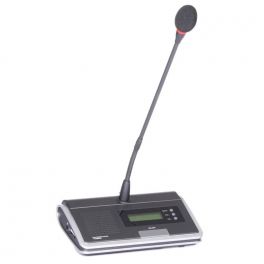
Rondson WCS - Delegate Desk Microphone
Call us for availabilityWireless delegate microphone desk for WCS conference system.- Delegated wireless microphone desk
- Housing with gooseneck and function keys
- Connection via frequency band
- LCD display for frequency display
- Transmit/receive distance: up to 60 metres
- Autonomy: 8 hours continuous
- Simple, quick and comprehensive setup
- Additional desks can be added
£371.99 £446.39 Incl. VATRef: ROWCSDCompare- IconBest Seller
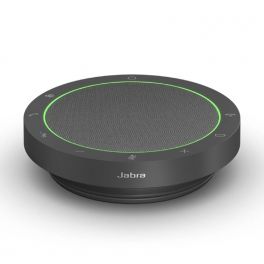
Jabra Speak2 55 MS Teams
Portable MS speakerphone with 4 beamforming microphones and triple USB-A + USB-C and Bluetooth connection.- Plug & Play speaker for PC and mobile
- HD sound with acoustic echo cancellation
- 4 beamforming microphones + 50mm speaker
- USB-A / USB-C connection and Bluetooth 5.1
- Up to 12 hours of talk time
- Microsoft Teams certified
IN STOCK5 of 5 Reviews£144.00£91.99 £110.39 Incl. VATRef: GNSPEAK255TCompare - IconBest Seller
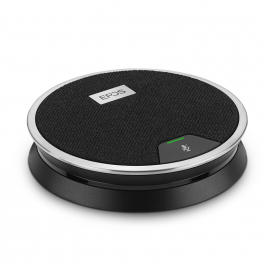
EPOS Expand 80 MIC
Expansion microphone for the Expand 80 - specially designed for all-in-one conference systems- Wired expansion microphone for conferencing
- Adjustable cable management system
- 360° Voice Isolation Smart Microphones
- HD speakers optimised for voice and multimedia
- Plug & Play connection
- Compatible with Expand 80
IN STOCK5 of 1 Reviews£159.00£132.99 £159.59 Incl. VATRef: SESEXPAND80MICCompare - IconBest Seller
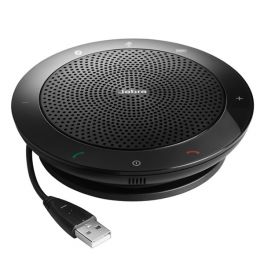
Jabra SPEAK 510 MS
Portable USB and Bluetooth speakerphone optimised for Teams- Perfect for PCs, tablets or smartphones
- Optimized for Microsoft Teams
- Ideal for conferences with up to 4 people
- Plug and Play installation via USB
- Up to 15 hours battery life
- Connect to up to 2 devices
- Bluetooth, up to 30m/100ft
IN STOCK4.8 of 47 Reviews£127.00£82.99 £99.59 Incl. VATRef: GN510MCompare 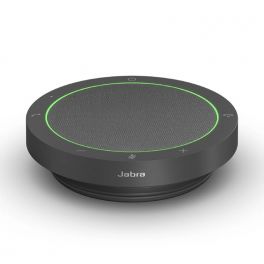
Jabra Speak2 40 UC
IN STOCKPortable UC speakerphone with 4 beamforming microphones and dual USB-A + USB-C connection.- Plug & Play speaker for PC
- HD sound with acoustic echo cancellation
- 4 beamforming microphones + 50mm speaker
- USB-A + USB-C connection
- Compatible with all softphones
£127.00£79.99 £95.99 Incl. VATRef: GNSPEAK240Compare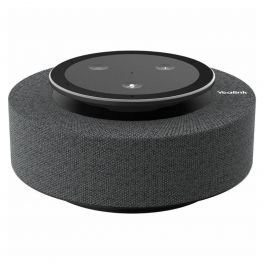
Yealink MSpeech USB
IN STOCKPortable speaker with USB connection, crystal clear sound in any situation - Ideal for medium rooms- Portable speaker with USB connection for your PC
- Superior audio quality: crystal clear calls
- Capture your voice at 360º within a 6-meter radius
- No noise or interruptions - Echo cancellation
- Quick and easy installation: Plug & Play
- Ideal for medium-sized rooms
- Compatible with Teams
- Compatible with all softphones on the market
£329.99£295.99 £355.19 Incl. VATRef: YEALINKMSPEECHCompare- IconBest Seller
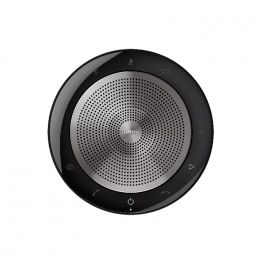
Jabra Speak 750 MS Teams
Powerful speakerphone with state-of-the-art audio quality optimised for Microsoft Teams- HD voice
- Acoustic echo cancellation (AEC) technology
- Certified for Microsoft Teams
- Omni-directional 360º microphone
- Compatible with laptops, smartphones or tablets
- Plug and play connectivity via USB or Bluetooth
- Talk time: up to 10 hours
IN STOCK5 of 7 Reviews£295.00£199.99 £239.99 Incl. VATRef: GN750MSCompare 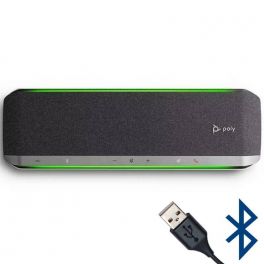
Poly Sync 60 UC
IN STOCKUSB-A Bluetooth Speaker Microphone for Medium Meeting Rooms- USB / Bluetooth speaker for medium rooms
- Full duplex sound for exceptional quality
- Dust and water jet resistant: IP64
- Clear communication with noise cancellation
- Poly MPN 216872-01
£493.95£287.99 £345.59 Incl. VATRef: PLSYNC60USBACompare- IconBest Seller
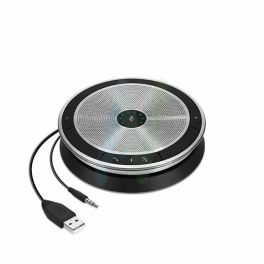
EPOS Expand 20 ML
MS Lync optimized portable USB model with HD EPOS sound- Conferences via PC, Mac, mobile or tablet
- Stylish, lightweight design
- Exceptional HD sound for instant UC conferencing
- Optimized for Microsoft Lync
- Sound enhancement for music
- Plug and play for instant small group conferences
- 2-year guarantee
IN STOCK4.5 of 12 Reviews£89.00£86.99 £104.39 Incl. VATRef: SESP20MLCompare 
EPOS EXPAND 80T
IN STOCKWireless multi-connection audio conferencing system optimized for Microsoft Teams - ideal for meeting rooms- Compact, wireless conference phone
- Group calls from different platforms
- Multi-connection speaker PC / MAC / Smartphone / USB Dongle
- Conference with voice assistant of your choice
- 360 ° Voice Isolating Smart Microphones
- HD speakers optimized for voice and multimedia
- Optimized for Microsoft Teams
£569.00£444.99 £533.99 Incl. VATRef: SESEXPAND80TCompare- IconBest Seller

Jabra Speak 810 MS
A portable speaker ideal for conferencing on PC and mobile - certified for Skype for Business- Latest generation Jabra portable speaker for conferencing on PCs, mobile phones and tablets
- This version is optimised for Teams
- Bluetooth connection for mobile phones and PCs
- USB connection to PCs
- 3.5mm jack connection cable
- Omni-directional microphone for 360° coverage
- Answer/end call button on speaker
IN STOCK4.6 of 5 Reviews£591.00£376.99 £452.39 Incl. VATRef: GN810MCompare - IconBest Seller
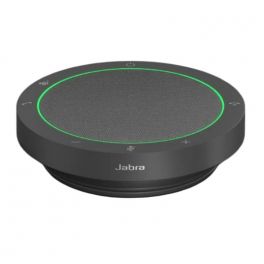
Jabra Speak2 40 MS Teams
Portable MS speakerphone with 4 beamforming microphones and dual USB-A + USB-C connection.- Plug & Play speaker for PC
- HD sound with acoustic echo cancellation
- 4 beamforming microphones + 50mm speaker
- USB-A + USB-C connection
- Microsoft Teams certified
IN STOCK5 of 1 Reviews£127.00£79.99 £95.99 Incl. VATRef: GNSPEAK240TCompare 
Jabra Speak2 75 MS Teams
Take your audio quality to the next level with the new generation Hybrid Working Speakerphone - the perfect tool for professionals- Super wideband audio and full-range speakers
- Advanced full duplex audio
- 4 beamforming noise-canceling microphones
- Microphone quality indicator
- Voice level normalization
- Up to 32 hours of conversation
- IP64: dust and water protection
- Plug-and-play with USB-C and USB-A adaptors
- Certified for Microsoft Teams
- In stock from March 15th
IN STOCK4 of 1 Reviews£297.00£188.99 £226.79 Incl. VATRef: GNSPEAK275TCompare- IconBest Seller
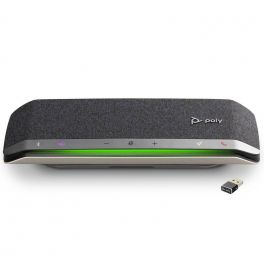
Poly Sync 40+ for Microsoft Teams with Poly BT600
Practical and powerful audio solution with double connection: USB and Bluetooth - ideal to accompany you in any situation- Multi-connection portable speakerphone for your PC or mobile device
- Bluetooth connection, USB-C cable and USB-A dongle
- Excellent Full Duplex sound with noise and echo cancellation
- Autonomy of up to 30 hours in conversation
- Dust and splash resistant (IP64 certified)
- Can be used as a charger for your devices
- Quick and easy installation
- Optimized for Microsoft Teams
IN STOCK1 of 1 Reviews£269.50£153.99 £184.79 Incl. VATRef: PLSYNC40MUSBABTCompare - IconBest Seller
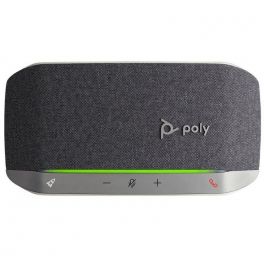
Poly Sync 20 UC USB-A
Speakerphone with USB-A connection (PC) and Bluetooth (mobile devices) ideal for your meetings and free time- Highly Portable speakerphone for work and leisure
- USB-A connection (PC) and Bluetooth (Smartphone)
- Microphone with full duplex audio for your calls
- Dust and splash resistant (IP64)
- Great battery life up to 20 hours!
- Seamless communications with noise cancellation
- Compatible with all softphones on the market
IN STOCK5 of 1 Reviews£115.95£67.99 £81.59 Incl. VATRef: PLSYNC20USBACompare 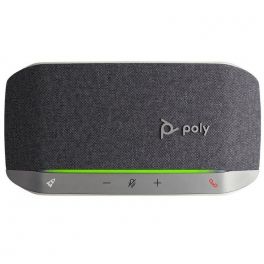
Poly Sync 20 MS USB-C
IN STOCKSpeaker and microphone with USB-C connection (PC) and Bluetooth (mobile devices) optimized for Teams- Ideal portable speaker for work and leisure time
- USB-C cable connection (PC) and Bluetooth (Smartphone)
- Microphone with full-duplex sound for your calls
- Dust and splash resistant (IP64)
- Great autonomy of its battery
- Seamless communications with noise cancellation
- Optimized for Teams
£115.95£59.99 £71.99 Incl. VATRef: PLSYNC20MUSBCCompare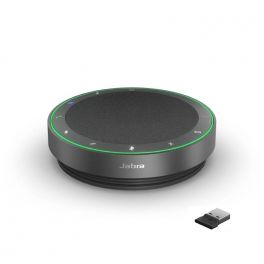
Jabra Speak2 75 Link 380a
IN STOCKTake your audio quality to the next level with the new generation Hybrid Working Speakerphone - the perfect tool for professionals- Super wideband audio and full-range speakers
- Advanced full duplex audio
- 4 beamforming noise-canceling microphones
- Microphone quality indicator
- Voice level normalization
- Up to 32 hours of conversation
- USB-A Bluetooth adaptor
- IP64: dust and water protection
- Certified for Microsoft Teams
£315.00£195.99 £235.19 Incl. VATRef: GNSPEAK275TDACompare
Yealink CP925
IN STOCKA powerful and elegant audio conference system for phone calls in HD- Small Space IP Conference Phone
- Designed for meetings of up to 5 people
- Can be connected to a smartphone via Bluetooth
- 4" (10cm) touch screen with color display
- Management of settings and calls directly on the screen
- Full duplex HD audio quality
- 7-microphone array with integrated echo cancellation
- 360° speech reception within a radius of 6 meters
- Connectivity: RJ45; USB-C; Wi-Fi and Bluetooth
- Compatible with all softphones on the market
£416.99£265.99 £319.19 Incl. VATRef: YEALINKCP925Compare- IconBest Seller

EPOS EXPAND 80
Adaptable and portable conference system for meeting rooms- Compact and flexible wireless audio conferencing system
- Bluetooth
- Brings together callers from different platforms
- Multi-connected speakerphone PC / MAC / Smartphone / USB dongle
- 1-button conference with voice assistant of your choice
- Smart microphones with 360 ° voice isolation
- Multimedia and voice optimized HD speakers
IN STOCK5 of 4 Reviews£349.99£330.99 £397.19 Incl. VATRef: SESEXPAND80Compare 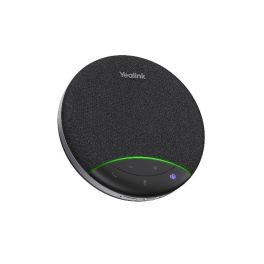
Yealink SP92 USB-C/A
IN STOCKBluetooth USB-C speakerphone with AI noise reduction and 20-hour battery life- 50 mm speaker
- AI noise reduction
- Bluetooth 5.3
- Up to 20 hours of battery life
- Fully charges in 2.5 hours
- Integrated touch controls
- Compact design
- Compatible with UC platforms and softphones
£49.99 £59.99 Incl. VATRef: YEASP92ACCompare
Yealink CP965
IN STOCKBest-in-class Audio Conference Experience, Reddot award-winning design, Legendary audio performance, Extra scalability for easy expansion- Android 9.0 OS
- 5'' capacitive touch screen
- Black acoustics fabric, resistant to water/oil/stain
- 20-foot (6-meter) microphone pickup range
- Built-in 12-microphone array for 360-degree voice pickup
- Built-in microphone for noise cancellation
- Full-duplex speakerphone with AEC
- Built-in Bluetooth/Wi-Fi
£699.99£418.99 £502.79 Incl. VATRef: YEALINKCP965Compare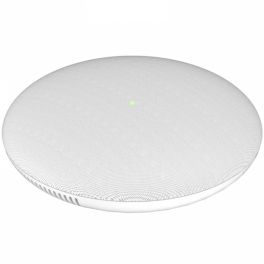
Grandstream GSC3505
IN STOCKPowerful one-way SIP Public Address Speaker- Speaker with HD acoustic chamber
- Features SIP paging, multicast paging, callwaiting with priority override
- Full-band and wide-band audio codec support including Opus & G.722
- Integrated dual-band 802.11 a/b/g/n WiFi and Bluetooth
- One 10/100Mbps network port with PoE/ PoE+
£159.99 £191.99 Incl. VATRef: GRAGSC3505UKCompare
Rondson WCS - Chairperson Desk Microphone
Call us for availabilityWireless chairperson desk microphone for WCS conference system.- Chairperson wireless desk microphone
- Housing with gooseneck and function keys
- Connection via frequency band
- LCD display for frequency display
- Function priority: speech recovery at any time
- Transmit/receive distance: up to 60 metres
- Autonomy: 8 hours continuous
- Simple, quick and complete configuration
£433.99 £520.79 Incl. VATRef: ROWCSCCompare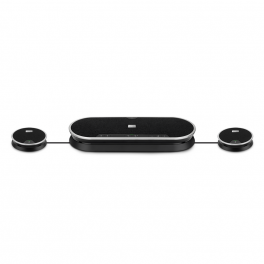
EPOS Expand 80 EPOS Pack + 2 Extension Microphones
Multi-connected wireless audio conference system with two additional microphones - ideal for meeting rooms- Compact, wireless audio conferencing system
- Bundles calls from different platforms
- Multi-connection speakerphone PC/MAC/Smartphone/USB Dongle
- With a pair of additional extension microphones
- Smart microphones with 360° voice isolation
- HD speakers optimised for voice and multimedia
- Plug & Play connection
IN STOCK5.0 of 5 Reviews£667.99£591.00 £709.20 Incl. VATRef: SESEXPAND80MIC2Compare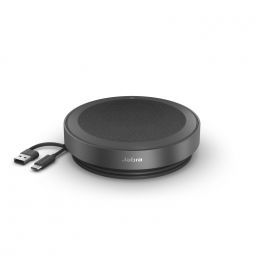
Jabra Speak2 75 UC
IN STOCKTake your audio quality to the next level with the new generation Hybrid Working Speakerphone - the perfect tool for professionals- Super wideband audio and full-range speakers
- Advanced full duplex audio
- 4 beamforming noise-canceling microphones
- Microphone quality indicator
- Voice level normalization
- Up to 32 hours of conversation
- IP64: dust and water protection
- Plug-and-play with USB-C and USB-A adapters
- Certified for UC
£297.00£186.99 £224.39 Incl. VATRef: GNSPEAK275Compare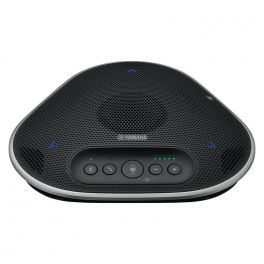
Yamaha YVC-330
IN STOCKPortable speaker with USB connection ideal for audio conferencing in small rooms- Speaker with USB and Bluetooth connection
- Optimized for small conference groups
- Noise Canceling Technology: SoundCap
- HD audio, portable and powerful volume
- NFC Compatible: Auto Pairing
- Ideal for small offices and travelling professionals
£480.00£383.99 £460.79 Incl. VATRef: YAYVC330Compare- Onedirect Recommends
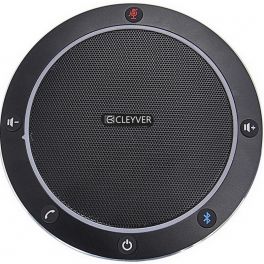
Cleyver - CC60
Speaker and microphone with USB connection for conference calls anywhere, anytime- Speaker with USB connection (PC) and Bluetooth (mobile devices)
- With 360º omni-directional microphones for crystal clear calls
- With use light (Busylight) to avoid interruptions
- Noise suppression for smooth communication
- Echo cancellation to focus solely on your voice
- Compatible for all softphones on the market
IN STOCK4.5 of 2 Reviews£69.99 £83.99 Incl. VATRef: ODCC60BTCompare 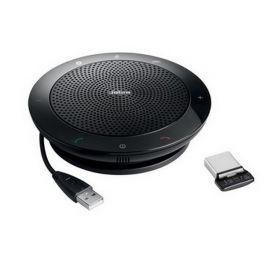
Jabra SPEAK 510+
Portable Bluetooth UC conference speakerphone with Bluetooth Dongle included- Ideal to use with PCs, tablets or smartphones
- Bluetooth dongle included for wireless connection to your PC via Bluetooth echnology
- Ideal for conferences with up to 4 people
- Plug and Play installation via USB
- Bluetooth connectivity
- Easy to carry: very compact (with carry case)
- Compatible with Skype for Business, Zoom etc
- Compatible with any Softphone and any Bluetooth device (mobile, tablet, etc.)
IN STOCK4.8 of 12 Reviews£157.00£100.99 £121.19 Incl. VATRef: GN510PCompare- IconBest Seller
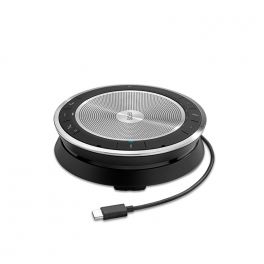
EPOS Expand 30 Teams
Audio Conference Speaker for PC / Mac, Mobile and Tablet - Optimized for Microsoft Teams- UC audio conferencing terminal (Unified Communications) advanced for PC / Mac, mobile, and tablet
- Connection USB-C and Bluetooth
- Discreet and easy to carry
- High-quality EPOS sound - enjoy a natural and fluid conversational experience
- Multi-connection, up to 3 devices connected simultaneously
- Quick and easy installation: connect and communicate
- Compatible with all softphones on the market
- Optimized Microsoft Teams
IN STOCK5 of 2 Reviews£135.00£112.99 £135.59 Incl. VATRef: SESPEAK30TCompare 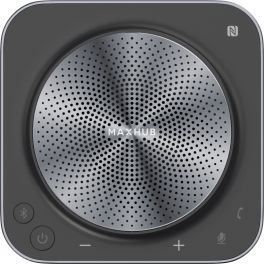
MAXHUB UC BM35 Bluetooth Conference Speakerphone
IN STOCKConference Speakerphone with USB and Bluetooth connection for medium and large meeting spaces- Bluetooth conference speakerphone
- Tweeter and woofer combo speaker
- 80Hz-18kHz Sound Frequency Covered
- 360º omnidirectional audio algorithms capture
- 8 microphone array with up to 6-meter audio pickup
- AI Noise Cancellation, reverberation suppression, acoustic echo canceller, and direction of arrival
- Full duplex audio
- Plug-and-play solution
- Powerful 4400mAh battery with up to 15 hours of collaboration
£300.00£289.99 £347.99 Incl. VATRef: MAXHBM35Compare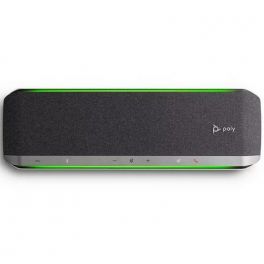
Poly Sync 60 MS
IN STOCKPortable speaker microphone with bluetooth and USB connection - Teams optimised- USB/Bluetooth speaker for medium-sized rooms
- Full Duplex sound for exceptional quality
- Dust and water-resistant: IP64
- Clear communication with noise cancellation
- Optimised for Teams
£493.95£279.99 £335.99 Incl. VATRef: PLSYNC60MUSBACompare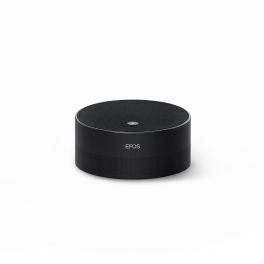
EPOS EXPAND Capture 5
IN STOCKWired speakerphone for crystal-clear remote meetings- Advanced voice recognition and transcription capabilities
- Up to 12 participants
- HD audio quality
- EPOS Voice Technology: clear and natural listening
- 7 digital MEMS omnidirectional microphones
- 360° sound coverage
- LED indicators for Cortana activity and muting
- Connectivity: USB
- Certified for Microsoft Teams
£368.99£289.99 £347.99 Incl. VATRef: SECAPTURE5Compare- IconBest Seller
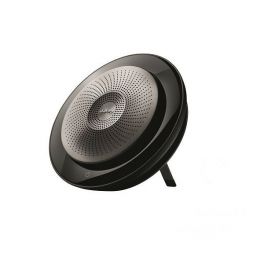
Jabra Speak 710 MS
Expandable conference room speakerphone optimised for Teams- Wireless centerpiece speakerphone
- Expandable up to 2 speakerphones
- HD voice for calls and music
- 360º Omnidirectional microphones
- Multiple features: call control, volume control, mute/unmute, Bluetooth pairing...
- Up to 15 hours of battery life
- Optimised for Microsoft Skype for Business
- Plug and Play connection
- Exclusive and innovative design
- Ideal for conferences of up to 6 people in a medium-sized room
- Compatible with Bluetooth devices (mobile phones, tablets)
IN STOCK5 of 12 Reviews£271.00£165.99 £199.19 Incl. VATRef: GN710MCompare 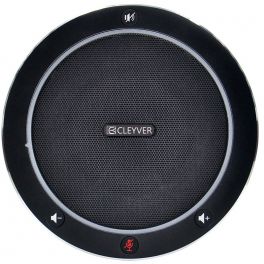
Cleyver - CC30 USB Speakerphone
Speaker with USB cable and 3.5mm Jack - ideal for audio conferences- Speaker with USB connection for your PC
- 3.5mm Jack connection for mobile
- Ideal to improve the quality of your conferences
- Omnidirectional microphones for 360º surround sound
- Noise suppression for crystal clear calls
- Echo override to avoid interruptions
- Compatible for all softphones on the market
IN STOCK4 of 4 Reviews£63.99£34.99 £41.99 Incl. VATRef: ODCC30USBCompare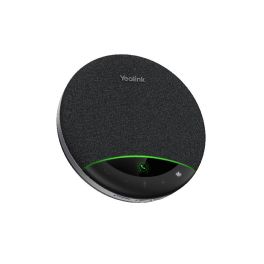
Yealink SP96 + USB-C/A cable
IN STOCKYealink SP96 speakerphone with touch controls and USB/Bluetooth connectivity via cable. Compact, plug & play – ideal for small to medium meetings.- Plug & play for instant use
- Dual connection: Bluetooth + USB cable
- User-friendly touchscreen
- 6 omnidirectional mics for 360° group pickup
- Daisy-chain up to 2 units for extended coverage
- Compact and easy to move
- Ideal for conferences with up to 4 participants
£109.99 £131.99 Incl. VATRef: YEASP96CACompare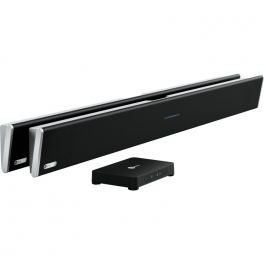
Nureva HDL410 - Black
IN STOCKWall-mounted audio conferencing system with 2 soundbars, microphones and USB box - for extra-large rooms!- Audioconferencing for XL rooms: Up to 180 m²
- Complete system: captation, broadcastingand audio processing
- 4 20W speakers for immersive sound
- 24 MEMS microphones + virtual microphones
- Echo cancellation and noise reduction
- Connection in USB
- Remote management via Nureva Console (cloud platform)
- Housing with permanent network connection
- Certified Microsoft Teams + compatible with all UC platforms
£8,900.00£8,899.99 £10,679.99 Incl. VATRef: NURHDL410BCompare- Onedirect Recommends
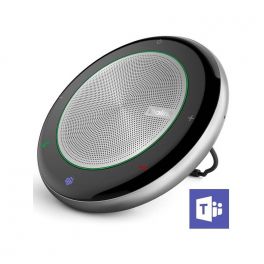
Yealink CP700 Teams
Portable speaker with microphone for PC or smartphone certified for Teams - Ideal for small rooms- Your conferences via PC and smartphone
- Bluetooth connection and USB cable
- High-quality conference audio
- Portable design and Plug & Play installation
- 360º microphone pickup range up to 1.5 meters
- call controls on the unit
- Compatible with any softphone
- Certified Microsoft teams
IN STOCK4.5 of 2 Reviews£122.99£63.99 £76.79 Incl. VATRef: YEALINKCP700TCompare 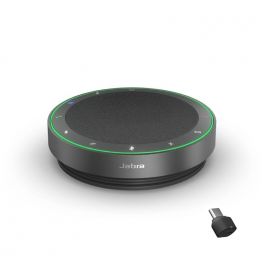
Jabra Speak2 75 MS Teams Link 380c
IN STOCKTake your audio quality to the next level with the new generation Hybrid Working Speakerphone - the perfect tool for professionals.- Super wideband audio and full-range speakers
- Advanced full duplex audio
- 4 beamforming noise-canceling microphones
- Microphone quality indicator
- Voice level normalization
- Up to 32 hours of conversation
- USB-C Bluetooth adaptor
- IP64: dust and water protection
- Certified for Microsoft Teams
£315.00£201.99 £242.39 Incl. VATRef: GNSPEAK275TDCCompare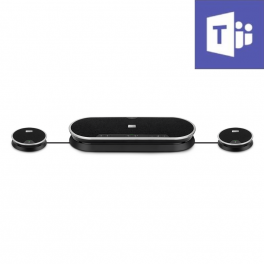
EPOS Expand 80 Teams EPOS Pack + 2 Extension Microphones
Teams-optimised wireless audio conferencing system with two additional microphones - ideal for meeting rooms- Compact, wireless audio conferencing system
- Bundles calls from different platforms
- Multi-connection speakerphone PC/MAC/Smartphone/USB Dongle
- With a pair of additional extension microphones
- Smart microphones with 360° voice isolation
- HD speakers optimised for voice and multimedia
- Plug & Play connection: just plug and play
- Optimised for Microsoft Teams
IN STOCK5.0 of 1 Reviews£887.00£703.86 £844.63 Incl. VATRef: SESEXPAND80TMIC2Compare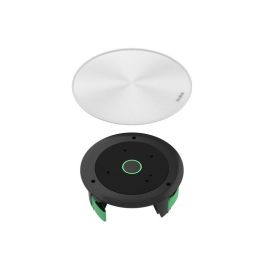
Yealink CM20 AI-Powered Beamforming Ceiling Microphone
IN STOCKElevate your conference experience with superior audio clarity.- 360° sound capture ensures every voice is heard clearly in meetings.
- 16 omnidirectional microphones provide comprehensive audio reception across the room.
- AI noise reduction filters out background sounds for a clearer conversation.
- Seamless integration with Yealink MVC systems allows for quick setup.
- Sleek design enhances the aesthetic of any conference room.
£599.99£559.99 £671.99 Incl. VATRef: YEALCM20UKCompare
Discover Our Powerful Audio Conferencing Solutions
Our audio conferencing solutions give teams an efficient way to communicate and collaborate anytime, anywhere; whether you’re in a warehouse, an office, or travelling on business. With modern audio conferencing tools, you can connect with people worldwide and have a smooth exchange of information.
Explore our range to find high-performance products from leading brands such as Yealink and Poly, as well as Microsoft Teams-certified devices to optimise your remote communication. Whether you’re looking for a compact conference phone with USB connectivity or a complete solution including accessories, at Onedirect you can compare products with ease, access the information you need, and order directly online.
Why Choose our Audio Conference Solutions?
- Cost-Effective Communication: Reduce travel expenses and boost productivity with virtual meetings that save time and resources.
- Optimised collaboration: Support teamwork, whether colleagues are in the same office or across time zones. With our audio conferencing solutions, discussions and brainstorming can happen in real time. Keeping information flowing smoothly and efficiently in your meetings.
- Flexible platforms and devices: Our solutions are compatible across platforms and give you the freedom to choose between different devices and software, such as Microsoft Teams and Zoom. You’ll always find the right fit for your specific requirements.
- Clear audio quality: Experience high-definition sound so every participant is heard clearly and without interference. Premium speakers and microphones ensure no key details are lost.
- Easy integration and user-friendly: Our audio conferencing tools integrate seamlessly with your existing systems, with no complex installations required. With, for example, a simple USB connection, your meetings are ready in no time, just plug in and go.
- Scalable and customisable: From small businesses to large teams, our solutions grow with your needs. You can scale your audio conferencing setup with ease and offer every participant a smooth experience, no matter how many people join.
- Global reach: Connect with people around the world and collaborate effortlessly across geographical boundaries.
- Security and data protection: Safeguard your conversations and information with robust security features. Our audio conferencing solutions offer encryption and password protection to prevent unauthorised access.
FAQs
1. What is an audio conference?
An audio conference is a phone- or IP-based meeting in which multiple participants communicate simultaneously via microphones and speakers; without being in the same location.
2. What types of audio conferences are there?
A distinction is made between traditional telephone conferences via the landline and modern IP-based conferences, e.g. via platforms such as Microsoft Teams or Zoom.
3. Which organisations benefit most from audio conferences?
Any organisation that regularly needs to communicate with teams or customers benefits from our audio conferencing solutions. Companies with hybrid working models or an international presence especially need reliable solutions for effective communication.
4. How do I ensure optimal audio quality in my meeting?
Invest in high-quality speakersphones and microphones, choose a stable internet connection, and minimise background noise.
5. Are there additional costs when using audio conferencing?
Our audio conferencing solutions are often subscription-based. Additional costs may apply for advanced features such as recording or higher participant limits. Some products also require the purchase of an additional licence to unlock extended features.
6. Can I use audio conferencing solutions on the go?
Yes. Most audio conferencing tools offer mobile apps or web-based platforms that let you join meetings from your smartphone or tablet.
7. How can I keep my audio conference secure?
Look for security features such as encryption, secure login and password protection to keep your confidential information safe.
8. Can I record audio conferences?
Yes. Many of our products offer recording features so you can save important conversations and refer back to them later.
9. What should I consider when choosing a conferencing system?
Key factors include room size, number of participants, compatibility with existing systems (e.g. your telephone system/PBX, Teams), and connection types such as USB or Bluetooth.
Ready to enhance your business communication with our audio conferencing tools? Check out our buying product guide for expert recommendations and find the perfect solution tailored to your needs!





